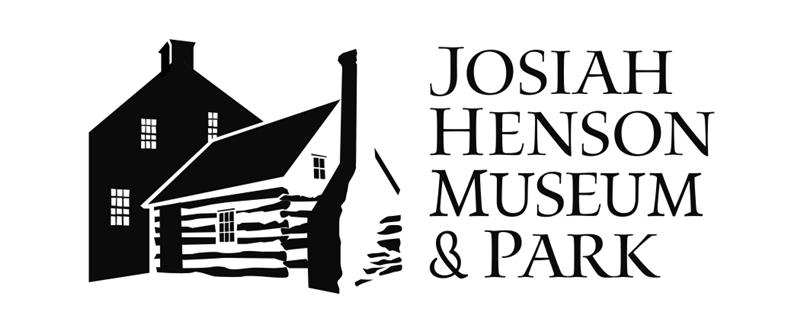by IFFP Member Cheryl Leanza
Although many rightly focus on Black history during Black History Month in February, the IFFP Racial Justice Tikkun Olam Group went on an outing recently in April to visit the Josiah Henson Museum & Park, a new park right near where we meet in person in Montgomery County, Maryland. Tikkun Olam is Hebrew and means “repair the world.” IFFP has several groups working on various kinds of justice–including an Environmental Working Group and one that assists and advocates for refugees. The Racial Justice Group Tikkun Olam Group offers discussions during Adult Group, serves as a resource for Gatherings and leads occasional outings, including our visit to Josiah Henson Park.
About Josiah Henson Museum & Park
The park opened last year, in 2021, after 15 years of effort, created with the cooperation and support of Rev. Henson’s descendants. According to the website, “Josiah Henson Museum & Park tells the story about the life and challenges of Reverend Josiah Henson, enslavement in Maryland, and the ongoing struggles of racial equality and justice.” When we arrived the docents and staff on the site were excited to see such a large group of 6 people coming together.
Josiah Henson was enslaved on the site. He became a Methodist minister while there and later escaped to Canada with his wife and four children. They founded a 500-person settlement called New Dawn, rescued 118 people from slavery, and became an internationally-known abolition activist.
The museum included an opening, informative 12-minute video combined with another video and exhibits in the plantation house, the original portion of which was built in 1800. For example, we learned that during Rev. Henson’s period of enslavement, approximately 30 percent of the people living in Montgomery County were enslaved Black people, many of them small children.

About Reverend Henson
Rev. Henson attempted to live a moral life–to the degree that when his owner directed him to bring his family and other enslaved people over a long journey from Maryland to Kentucky, he felt himself to be duty-bound to keep his promise rather than run away. But later, when he saved $450 which he had been promised was sufficient to buy his own freedom, the white owners changed the goalposts, asking for $600 more. Instead, Rev. Henson and his family escaped from Kentucky to Canada in a perilous 700-mile journey.
Although he didn’t learn to read or write until he was 50 years old, Rev. Henson dictated an auto-biography (read excerpt of Rev. Henson’s auto-biography here) which partially inspired Harriet Beecher Stowe’s Uncle Tom’s Cabin. The docent on site told us that Stowe went to interview Rev. Henson several times in Canada while she was writing the book. While “Uncle Tom” has often become viewed as a pejorative term through popular representations which erased his (and Henson’s) heroism, Uncle Tom in Stowe’s novel is a Christlike figure who sacrifices himself to save other enslaved people. The novel is viewed as one of the first best-sellers, and was pivotal in gaining support for the abolition of slavery in the U.S. The park’s exhibits showed the deliberate efforts to denigrate the Uncle Tom figure, using racist stereotypes.
It was amazing to visit a location that impacted history so profoundly, and to find that it is around the corner from a place we gather almost weekly. The site hosts a separate log kitchen which is likely the same one where Rev. Henson spent his youth–the same location is pictured in his autobiography.
We puzzled over the morality of Harriet Beecher Stowe earning so much money off a story inspired by Rev. Henson’s own autobiography. It would not be the first or last time a White person made fame and fortune by using a story lived and/or written by a Black person. On the one hand, the book changed the course of U.S. history by increasing criticism and understanding of the horrors of slavery. Experts in the educational video on site said that many families at the time owned only two books–the Christian Bible and Uncle Tom’s Cabin. And Rev. Henson’s autobiography sold much better after people learned he inspired the book. He was able to use that money to purchase his brother’s freedom. At the same time, the county exhibits speculated that a White woman’s version of events was likely more palatable to the reading public–and presumed to be more believable even though slavery’s proponents falsely claimed that she exaggerated the truth (Stowe published a non-fiction follow up documenting her real-world sources, including Rev. Henson’s autobiography). Nor was Stowe immune from theft of her intellectual property: without her permission, her novel was turned into plays and shows that ran for 90 years, and twisted her message into racist propaganda. And Stowe used her privilege to make change. If Stowe interviewed Henson, did she also ask his permission to use his story? How does that impact our modern evaluation of her choices?

Rev. Henson was incredibly strong and brave and persevered in the face of incredible terror and trial. Today, his many descendants live in Montgomery County, Ohio, and in Canada. They regularly gather for family reunions that rotate among the three locations. Research found that the family likely includes not only Josiah Henson but also likely Matthew Alexander Henson, the first person to reach the North Pole (leading the way for the more well-known, white, Commander Peary); James E. Henson, Sr., a contemporary local Howard County Maryland human rights leader; and Taraji P. Henson, a well-known film star who acted in the movie Hidden Figures. I am grateful that so many people worked to save and rediscover this local piece of American history that is worth exploring all year round.

